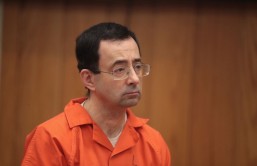Neil Armstrong's widow discovered a white cloth bag filled with items from the craft that launched the late astronaut into space.
Armstrong was the first person to set foot on the moon, he passed away in August 2012 from complications associated with a heart surgery, the Smithsonian Air and Space Museum reported.
A team of experts analyzed the artifacts from the iconic Apollo 11 mission, and determined the bag itself was a special container called a Temporary Stowage Bag (TDB) or "McDivitt Purse" that was stored in the Lunar Module Eagle during the launch. The items in the bag are believed to have been scheduled to be destroyed when the Eagle crashed into the lunar surface, but were for some reason spared.
The researchers found evidence of the bag's contents in the transcripts of the mission, and were referenced after Armstrong and Buzz Aldrin were reunited with Michael Collins in the lunar orbit.
"You know, that - that one's just a bunch of trash that we want to take back - LM parts, odds and ends, and it won't stay closed by itself. We'll have to figure something out for it," Armstrong said to Collins in the transcript.
The contents of the bag were also referred to as "odds and ends" and "10 pounds of LM miscellaneous equipment." The researchers and Armstrong's family had never heard mention of the bag, and they had most likely been sitting in a closet forgotten for 45 years.
Two items were deemed special enough to be put on display in the Outside the Spacecraft: 50 Years of Extra-Vehicular Activity exhibition. One is a 16mm Data Acquisition Camera that was attached to the window of Eagle to record the lunar landing, and the other is one of two waist tethers that would have been used to secure astronauts in the event of an emergency spacewalk.
"In the future, we hope to complete documenting and cataloging the entire collection of items and, as appropriate, to place them on public display. Seeing such things with one's own eyes helps us to appreciate that these accomplishments are not just in history books or movies, but involved real people and real things, and that they involved an extraordinary amount of detailed engineering and planning," Allan Needell is a curator in the Space History Department, stated on the museum's blog.
The items are described in detail in the addendum to the Apollo Lunar Surface Journal.








